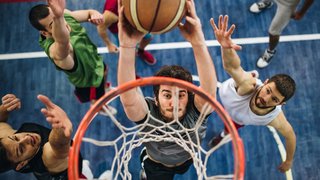
Sometimes a patient is so desperately ill that his physicians are forced to take a chance and try something creative. Davy Hobson is delighted that his cardiology team did just that.
“If they hadn’t, I would be 6 feet under,” Davy likes to say when he shares his story.
Davy, an RN, first came to UT Southwestern on Valentine’s Day in 2013, an ironic day for a man with severe heart problems.
He had an inflammatory disease called sarcoidosis, which typically affects the lungs but also can affect the heart, lymph nodes, eyes, and skin. Davy’s cardiac sarcoidosis had led to major weakening of both sides of his heart muscle as well as serious heart rhythm problems. He was developing heart failure. He’d undergone multiple prior surgeries, including having a pacemaker and a defibrillator implanted, before he came to us.
We prepared Davy for an ablation procedure, which involves running a catheter through a vein to the heart to correct a heart rhythm problem. The ablation had barely gotten underway when he abruptly went into cardiac arrest. The team brought him back, but he crashed again. This was a life threatening crisis.
As team members worked to restart Davy’s heart, give him multiple transfusions, and keep him alive, we came to a decision: He’d need a transplant, but to keep him alive until a heart became available, we were going to have to try something new.
A double-implant to support the heart
A patient with heart failure who is awaiting a transplant often will be kept alive with a machine that helps circulate the blood to his body, in essence helping the heart do its job. This machine, which is surgically implanted with part of it inside the chest and part of it on the outside, is called a left ventricular assist device (LVAD).
Note the word “left” in the name. In the vast majority of patients with heart failure, it’s the left side of the heart — the powerful chambers that pump blood throughout the body — that’s the problem. But Davy’s sarcoidosis had weakened both sides of his heart.
So our heart transplant team decided to implant two ventricular assist devices (VADs) – one to boost the pumping action of the left side of his heart and one to boost the pumping action of the right side. It was an unusual move, but we were faced with an unusual situation, and we needed to be creative.

Davy’s new heart
After the surgery, Davy had two controllers – one for each VAD. We labeled them so everyone would be certain which controller went with which VAD. Fortunately, the bi-VAD procedure worked just as we had hoped it would.
The two VADs kept him going for four months as he waited for a heart to become available. Then, in June 2013, we were able to give him the news that everyone had been waiting for.
My colleague, Michael Jessen, M.D., led the surgical team that performed the transplant. It was a complex surgery because so much scar tissue had built up due to the multiple surgeries Davy had undergone over the years and because there were multiple devices to remove. Despite the intricacies, the procedure ultimately was successful.
Davy’s recovery went smoothly, and eventually he was able to return to his job as a nurse. These days, he works for a college in Fort Worth, training a new generation of medical workers.
Davy was restored to a fully functional life after being so desperately ill. It’s extremely gratifying to know that now he’s able to continue helping other people.
For more stories from our cardiology and transplant teams, sign up to receive articles in your email inbox.











